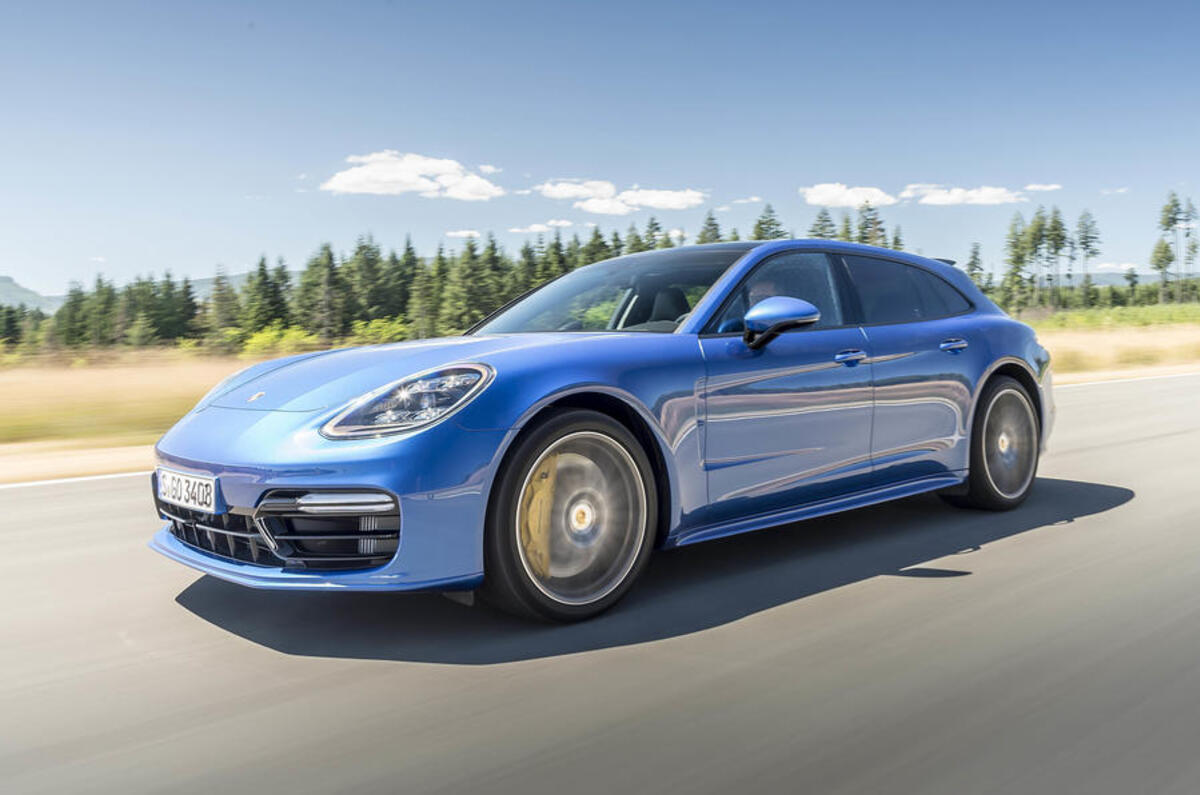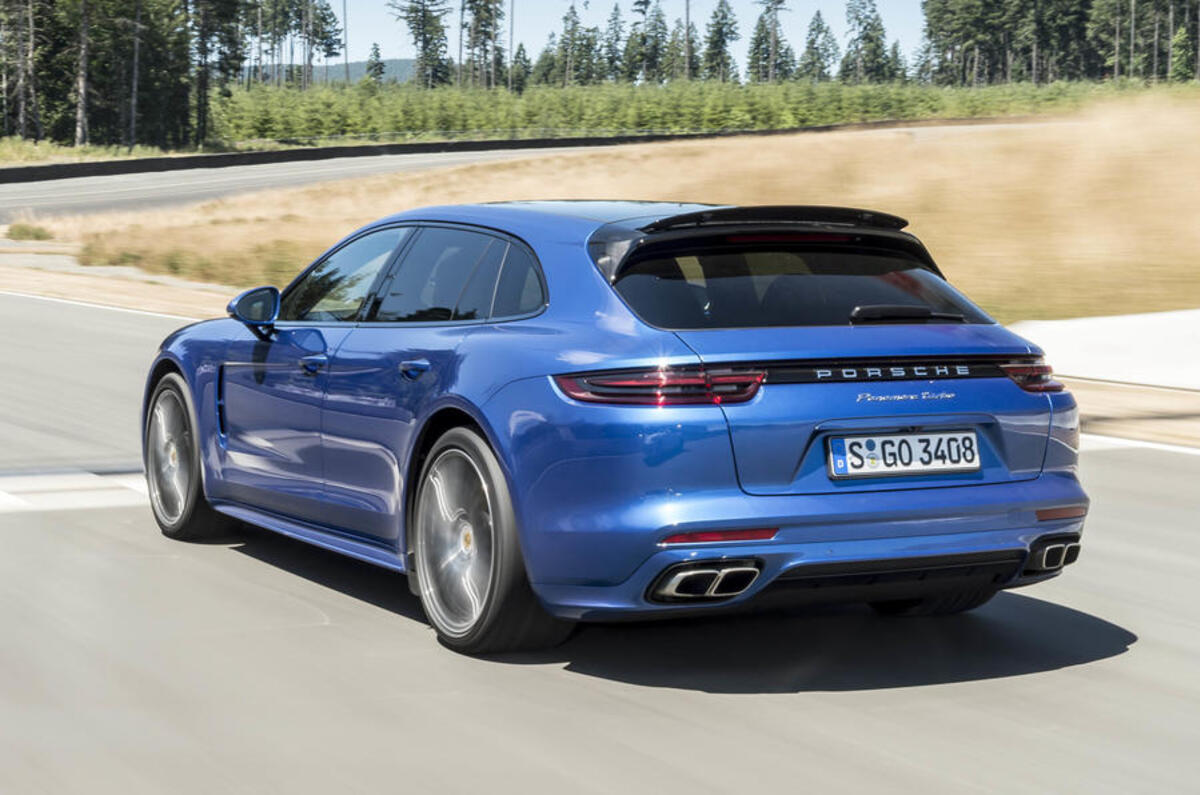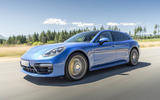The Porsche Panamera Sport Turismo is the new, more practical sister of the four-door Porsche Panamera liftback.
After our look at the 456bhp Panamera 4 E-Hybrid version, which we liked in spite of its slightly mannered and underwhelming petrol-electric hybrid powertrain, now’s our chance to find out if the 542bhp V8-engined Turbo version feels more like the definitive flavour.
The rest of the Sport Turismo engine range mirrors the standard Panamera, with the 4 powered by a 3.0-litre V6, the 4S by a 2.9-litre V6 while completing the range is the ballistic 4.0-litre V8 oilburner powering the 4S Diesel Sport Turismo.
Understanding the Porsche Panamera Sport Turismo
The Panamera's estate makeover consists of a longer, straighter and higher roofline, along with slightly larger rear passenger door and boot openings.
The car’s wheelbase and rear overhang measurements remain the same as the standard-wheelbase Panamera’s. Boot space grows by 25 litres to 520 measured up to the windowline, rising to just under 1400 to the roof with the rear seatbacks folded.
And with those seatbacks in place, the Sport Turismo is also the first Panamera able to carry five passengers – although Porsche prefers to call it a 4+1.
What separates this car from a normal four-door Panamera Turbo technically amounts to very little. Adaptively damped air suspension comes as standard, just as it does on the equivalent liftback, while both Porsche’s PDCC Sport package (which bundles active anti-roll bars and a torque-vectoring active rear differential) and its four-wheel steering system are options.




































